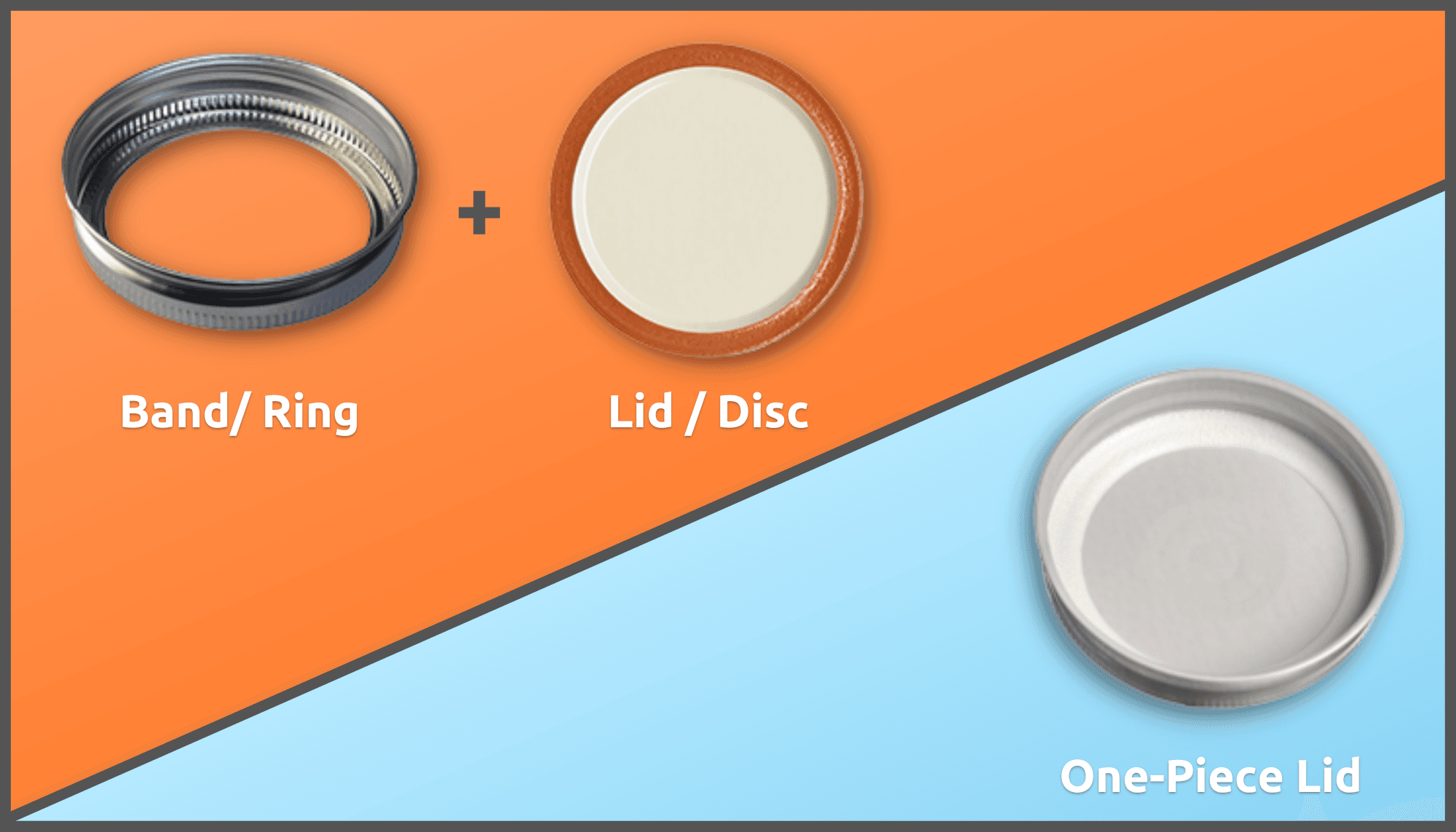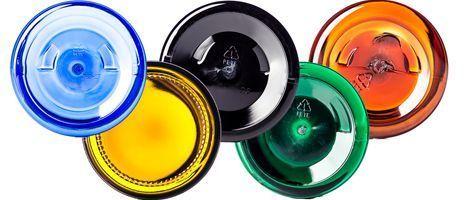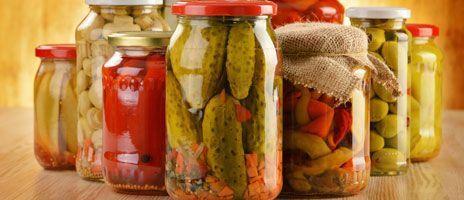What are Plastisol Liners?


The process of using jars to can and preserve food is a tradition that has been passed down for generations and it is still used today by small and large companies alike. Often, when thinking of canning, many of us likely picture small jars of homemade jams or pickled goods received as gifts, topped with those fun metal popping button lids (we've all clicked the pressure button on those for fun before)! However, canning is not just for DIY-ers and craft enthusiasts. Canning goods in glass jars is a great way for any sized operation to package goods and keep them fresh. In fact, there are even jars and lids specially designed with this in mind.
If you've looked at our website for much time, you likely noticed that our most common canning lids are a little different than the ones you find in the canning aisle at your local home goods store. Namely, you’ll notice that most of our lids are one-piece lids instead of the more traditional two-piece ring and sealing lid combo. So what makes these lids different? That answer and more await us in the article below. So let’s make like a tamper-evident canning lid and pop to it!
Type of Sealing Material

Two-piece canning lids are often made with a silicone or rubber material that creates an airtight seal when used in traditional canning methods. Our one-piece lids use a different material to form an airtight seal: Plastisol! This plastisol is made from PVC plastic and plasticizers, which makes PVC more moldable.
How Does Plastisol Work?
When used with Hot Water Bath and Hot Fill canning methods, plastisol becomes more malleable, which allows it to form the hermetic/airtight seal that we see in canned goods. The heat causes the plastisol to mold around the landing of the jar and then solidify as the product cools.
We stock two different types of plastisol (though we have access to source many other kinds of canning lids). The two types of plastisol lids we stock are standard and pasteurization-grade. Each has a different use depending on the canning process that you use.
Pasteurization-Grade - Lug and Twist Lids
The key to successful pasteurization grade sealing is knowing which canning method to use for the type of plastisol that is in your lid. You may need to use a lug lid (also known as a twist lid) which uses pasteurization-grade plastisol for hot fill and hot bath canning. The benefit of using a lug lid is that they have a unique style of threading that includes several small threads that help lock the lid in place vs. one continuous thread.
Pasteurization-Grade plastisol on lug and twist lids can be used with both hot water bath and hot fill canning methods. Examples of products canned this way include vegetables, fruits, jams, and pickles.
Standard Plastisol - Continuous Thread Lids
Two-piece lids use a continuous thread ring to help with sealing products inside. We do stock continuous thread lids with standard plastisol, however, most are not the same height and do not work the same way as a traditional two-piece lid.
Continuous thread lids have two numbers associated with them that denote the neck finish (i.e. 70-450G). The first number is the diameter in millimeters and the second number/ letter represents the style and height of threads. Threading that ends with “G” is most similar to the height of two-piece canning lids. Lids that don't have the “G” ending (such as 70-400) will likely be shorter than a two-piece lid. Note, most of our one-piece lids do not end with “G”.
Standard plastisol on continuous thread lids is best used with hot-fill canning methods. Some examples of products that use hot fill canning include juices and sauces.
Sample, Sample, Sample!
Sometimes the differences between the various canning lid styles are hard to see while looking at a picture online. We always recommend sampling lids and jars to test them with your product before placing a larger order. Everyone's product is unique and may interact differently with the jars and lids. It is especially important to sample if you are trying to match our lids with jars from a different company or vice versa.
Our Customer Care team is happy to help you put together a sample order. Give us a call at 800-473-4144 or send us an e-mail at customerservice@containers.com.
Or, if you would like to put together your order online, check out our FAQ Page for instructions on how to put together a sample order!
Additional Questions?
Below are some commonly asked questions that we get regarding metal canning lids:
- Where'd the Button Go?
How does the plastisol seal work on lids that don't have a vacuum seal button? The button is a great way of knowing a vacuum seal has been achieved, but the definitive way to know this is the "Thunk" sound when you open the container. Another way to tell if the product is sealed successfully is by pushing in the center of the metal canning lid with your fingers to see if it bends easily; If sealed properly, the lid shouldn't bend or have much give.
- Is Sterilization Needed?
It depends on what you are using the container and lids for. See our policy about sterilization for more details: Info on Sterilization
- What Type of Metal Are They Made Of - Are the Lids Food Safe?
Each lid is made by a different manufacturer and may be made from different materials. For the most part, our canning lids are food safe, but we are always happy to look up the item in question and let you know for sure!
- Wide-Mouth Lids?
Wide-mouth lids and jars are often specific to a certain brand of two-piece lids, and we don't carry name-brand lids or jars in our inventory. Because there isn't an industry standard for what wide mouth means in each brand, we can only match our stock lids with our stock jars. However, for larger bulk orders, we are able to source specific lids and containers for you at a good price.
- More information?
For more information about the right lid for your canning project, check out this article: 3 Types of Plastisol Canning Caps. Or give us a call and our team will be happy to assist you!




